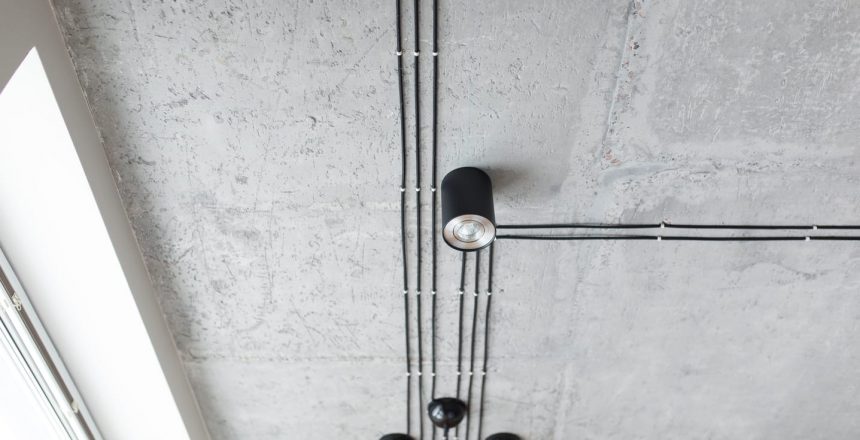Design ideas have evolved throughout the years, and many modern homes and apartments are choosing a certain aesthetic. The concrete ceiling is appearing in more places than just parking garages, as it can now be found in residential houses, apartment units, and even in commercial office buildings.
Great care and effort needs to be taken when installing a concrete ceiling. Often an exposed concrete ceiling is the underside of a thick steel-reinforced slab of concrete, forming both the floor and the ceiling. Instead of covering the concrete with another material, like plaster or paint, the ceiling remains exposed.
The project or build may require different methods of installing the concrete ceiling. Slabs can either be prefabricated and transported to the site, or they can be poured on site. The concrete needs a framework molding, typically made up from timber or plywood. After the concrete has hardened, the molding can be removed.
But before the framework is placed, any of the home’s inner workings need to be positioned. This includes pipes and other plumbing fixtures, as well as lighting and other wiring requirements. The concrete will then keep these concealed within. Another option is to pour the concrete first and then install plumbing or wiring. They can be covered by a drop ceiling, or left exposed depending on the style the building wishes to have.
Framework choices will play a role in style, too. The surface of the framework can leave behind a different appearance to the concrete as it hardens. A range of finishes is possible, from smooth to textured. Either choice can eliminate the need to paint or plaster over the ceiling.
Like all concrete projects, a concrete ceiling can still suffer damage from cracks. Structural damage will need immediate attention, but fortunately non-structural damage can be more easily repaired, leaving behind a concrete ceiling that was just as strong as it was when it was installed.
Repairing a concrete ceiling is like repairing most cracks that occur in concrete. You will need an epoxy-based concrete repair compound, particularly one that bonds more slowly. After injecting the compound into the crack, smooth the surface with a putty knife. Do not be shy about adding more compound to the crack, as you need to be sure that the crack is being filled.
Cover the repair as it cures. Duct taping a piece of cardboard of the crack will help protect the area, but duct tape by itself can be applied directly to the repair as well. After it has set, sand over the crack to help smooth it out and blend it into the ceiling. If it is a painted ceiling, finish up with a small layer over the repair.
Installing a concrete ceiling in your home or business can provide the desired look that you have been searching for. D.C. Byers Company/Grand Rapids is qualified to help install or repair a concrete ceiling, and will get that concrete back into great shape.
To get a quote on your concrete restoration needs, call DC Byers Company/Grand Rapids today at (616) 538-7300. Our experience and expertise allow us to assess the damage correctly and plan how to perform the repairs to allow you to use your space properly.
For concrete restoration and repair, DC Byers Company/Grand Rapids looks at all the factors contributing to the deterioration of the concrete. By understanding the underlying problems, we can start working on the most satisfying and cost-effective solutions.
